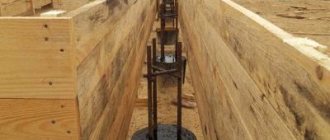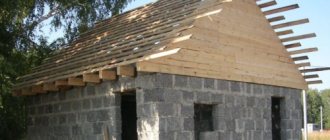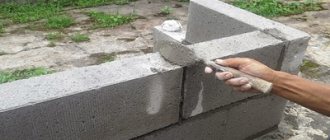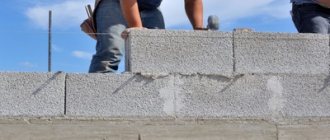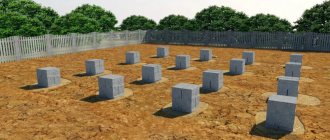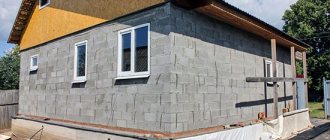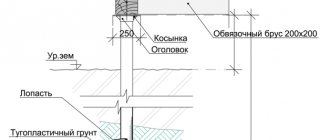Nothing can withstand time. Even traditional Russian baths. No, they have not gone away - they just began to use much cheaper materials, but with similar performance characteristics. Surely you have already heard positive reviews from the owners of bathhouses made of foam blocks more than once: people build them themselves and note their amazing practicality and savings in the invested material resources. True, in order to get a result that is truly pleasing to the eye and heart, it is necessary to take into account all the details of the layout and draw up a high-quality project. We save your time and present in this material the best projects for building a bathhouse from foam blocks with your own hands.
Is it possible to build a bathhouse from aerated block?
Aerated concrete is cellular concrete with high porosity and the ability to absorb moisture. Therefore, for a long time it was believed that gas block was not the most suitable material for building a sauna. But the advantages of aerated concrete outweighed its disadvantages, and today not only small family bathhouses on private plots, but also large two-story bathhouse complexes are built from aerated concrete blocks. Of course, during construction, all operational features of aerated concrete are taken into account:
- The gas block easily absorbs moisture, and it is difficult to dry the room. The problem can be solved very simply: by providing good ventilation. The easiest way is to choose a bathhouse design that has large windows located opposite each other. After washing, just open the windows and the room will quickly dry out in a draft. In this way, both a small sauna and a large aerated concrete bathhouse 6 by 6 meters can be dried.
- In a bathhouse made of aerated concrete there will be no characteristic woody smell. Indeed, when heated, a gas block will not smell like natural timber, but interior wood trim will help give the sauna a “woody” feel. Both chamber-drying timber and inexpensive lining are suitable for this. A gap of 5-10 cm must be left between the gas-block wall and the wooden finish for ventilation. This should be taken into account when choosing a project. For example, the useful area of a 4 x 3 bathhouse made of aerated block will be 15% smaller due to the gap arrangement.
- Need for waterproofing. Considering that we are talking about rooms with high humidity, it will be necessary to do effective waterproofing between the foundation and the walls, between the floors (if a two-story bathhouse project is chosen), between the roof and the walls. The durability of the structure will depend on the quality of waterproofing. Two undeniable arguments can be made here. First: even if the bathhouse was built from moisture-resistant brick, you would still have to do waterproofing. Second: a turnkey bathhouse made of aerated concrete, even with the most expensive waterproofing, will be much cheaper than one made of timber or brick.
Expert opinion Vitaly Kudryashov builder, aspiring author
Ask a Question
So, we can conclude that, like a residential building, a bathhouse made of aerated concrete is a reality. All existing shortcomings of this material can be easily eliminated with the right approach to construction.
Insulation
The outside of a bathhouse made of gas silicate blocks is insulated depending on the region. In central Russia, 10 cm of basalt wool is enough. In more northern regions, more is needed, in southern regions less. The use of mineral wool is associated with certain difficulties: it is afraid of moisture and loses its properties when wet. And if it freezes wet, it will simply crumble. But that's not all. Since the foam block is quite hygroscopic, it also needs to be protected from moisture. Therefore, before laying the insulation, it is treated with impregnation such as Penetron or Kalmatron. After drying, you can begin thermal insulation.
Based on all this, it makes sense to spend money on the purchase of extruded polystyrene. It itself does not absorb water or conduct it, has low thermal conductivity, and is not damaged by rodents and insects. This one material, laid without cracks, will be both hydro- and thermal insulation.
The sheathing is stuffed on top of the insulation, and then the sheathing is added to it. You can attach a painting mesh to polystyrene foam and plaster over it - if this type of finishing appeals to you more.
Options for finishing and insulating foam concrete walls
The inside of the steam room will be insulated as follows (from the wall to the steam room):
- cement-based impregnation that reduces hygroscopicity;
- block 50*40 m;
- there is a heat insulator between them;
- steam and hydrobarrier - usually foil film (you glue the joints and fasteners with special tape - buy it in the same place where you buy the film);
- counter-lattice at least 2.5 cm thick;
- lining.
In other rooms, including the washing room, insulation may not be installed. If you also cover the washing area with clapboard, then a vapor barrier film should remain. It may no longer be foil-coated (this is mainly only for steam rooms), but both it and the impregnation should be there. In the remaining, “dry” rooms, the impregnation remains (the humidity is still high), the lathing, and the lining is stuffed to it.
The walls are covered with sheathing - preparation for laying insulation
The ceiling insulation in the steam room is standard (from bottom to top, when viewed from the steam room):
- lining;
- vapor barrier film (foil);
- rough ceiling;
- insulation from the attic.
Moreover, a ventilation gap is required between the lining and the vapor barrier. It is organized using a counter-lattice. Read more about insulating the ceiling of a steam room in the article “How to insulate the ceiling in a bathhouse with your own hands”
Advantages of aerated concrete baths
Now let’s look at the advantages of building turnkey aerated concrete baths:
- Projects and prices. The construction of even a large aerated concrete bathhouse with a terrace, enclosed veranda or attic will not be burdensome on the budget. Prices for standard projects start from 5,000 rubles, and in some cases the project can be obtained for free.
- Heating rate. Aerated concrete blocks heat up quickly and retain heat well. You can heat a gas-block steam room in a couple of hours, while heating a brick sauna takes 6-7 hours.
- Resistant to mold and rot. Wooden saunas suffer from these “illnesses”. The gas block is not susceptible to rotting and mold, so you don’t have to worry about a healthy microclimate.
- Light weight. Aerated concrete blocks are a lightweight material, so the structure does not need a reinforced foundation. For a small 3 by 3 bathhouse made of aerated concrete, you can use a non-buried concrete strip only 20 cm wide as a base.
- Non-flammable and environmentally friendly. The presence of a stove requires special fire safety measures. Aerated concrete is a non-flammable material that is resistant to fire and prevents its spread. When heated, the blocks do not release toxins.
Peculiarities
Bathhouses are not uncommon these days. It is built from different materials. Most often, of course, there are structures made of wood. However, such buildings must be carefully looked after so that they retain their original appearance and do not rot over time. In addition, wooden baths are fire hazardous, even if they are treated with special impregnations.
An excellent alternative to such demanding materials are blocks.
Their use in the construction of baths is not rare. Many owners choose just such materials, as they have many positive characteristics and are superior to wood in many respects.
The main feature of building blocks is their porous structure. In this case, the pore sizes (as well as their shape) can vary chaotically over the entire area of the block. Due to this distinctive characteristic, the mechanical and thermophysical properties of such building materials are not uniform. Because of this, the bathhouse must be very carefully insulated not only from the inside, but also from the outside.
It is worth noting that the blocks absorb moisture like a sponge. In the summer season, this feature does not mean anything terrible, but in winter, previously absorbed water will freeze and increase in volume. This can lead to sad consequences - the destruction of blocks. Of course, this problem can be completely avoided. To do this, it is necessary to provide the building with high-quality waterproofing inside and outside.
Aerated concrete bath projects
A bathhouse or sauna is a standard structure, so owners rarely order an individual design, but choose a faster and more affordable option - a standard turnkey aerated concrete bathhouse project, the price of which starts from 5-6 thousand rubles. The project contains architectural and design solutions, information about the object: area, materials, layout, drawings. An obligatory part of the design documentation is an estimate, which describes in detail what the final cost of the structure consists of.
We suggest considering several universal projects for an aerated concrete bathhouse located near the house:
Small sauna up to 20 m²
A compact 4 by 4 bathhouse made of aerated concrete is suitable for a small area. The structure is designed for 4-5 people. The steam room in such a bathhouse is small - no more than 25% of the total area, another 25% is occupied by the shower and washing room (room for storing equipment). The rest room is combined with a dressing room. In some cases, this is inconvenient, so you can consider a 5 by 3 bathhouse project made of aerated concrete. Such a structure will have a rectangular shape, so the rooms will be located one after another: room - dressing room - steam room.
Standard bathhouse made of aerated block 6 by 6
A large building that can comfortably accommodate a company of 8-10 people. Often, having the opportunity to build a large building, future owners choose a bathhouse project made of aerated concrete with a terrace or open veranda on which a barbecue or barbecue is installed. The design of a 6x6 bathhouse made of aerated concrete, in addition to a steam room, shower and dressing room, may include a separate room with a shower, jacuzzi or even a bedroom where you can relax after water treatments. Having the opportunity to make a large building, you should not limit yourself to a standard 6 by 6 meter aerated concrete bathhouse project. Consider options with other sizes. For example, a 6 by 4 bathhouse made of aerated block will be more preferable for a rectangular area.
Bathhouse 6 by 3 made of aerated concrete on 2 floors
A two-story sauna with an attic made of aerated concrete is already a full-fledged recreation center. On the ground floor there is a spacious steam room, a dressing room, a wardrobe that can be divided into male and female parts, showers, a jacuzzi, and a swimming pool. This is exactly the design of a 5x7 aerated concrete bathhouse on 2 floors that should be considered by those who want to equip several recreation rooms. Recreation areas are located on the attic floor. This could be one living room plus one bedroom or several separate bedrooms.
Characteristic
Gas silicate block
Manufacturing proceeds as follows:
- Using special equipment, aluminum-based powder and Portland cement are combined.
- Next add water, ordinary cement and quartz sand.
The resulting samples have the following advantages:
Advantages
- Low cost. The absence of expensive components and additional processing processes that require brick and wood makes the cost of this material minimal.
- High thermal insulation. For a bathhouse, this is a very significant indicator, which also allows you to save on insulation for the bathhouse.
- Little weight. This indicator allows one person to carry out all the work.
One product can be easily lifted with one pair of hands
- Big sizes. Thanks to this, construction work goes much faster.
- Ease of processing. Any cutting can be easily done with your own hands using an accessible tool.
Cutting with a regular saw
- Fire safety. Complete non-flammability means there is no risk of fire from accidental exposure to open flame.
Flaw
It would be fair to note the disadvantage of gas silicate - extensive moisture absorption. Taking into account the fact that the bathhouse provides high humidity in the steam rooms, part of the savings must be spent on high-quality waterproofing.
Project selection
When choosing a project for a bathhouse made of aerated concrete with a relaxation room, a terrace or for a modest sauna 4x4 meters, consider the following:
- The minimum area for 1 person is 2 m², the optimal is 3-4 m².
- When calculating the area, take into account the thickness of the gap between the gas block wall and the wooden cladding.
- It is better if the shape of the structure follows the configuration of the site.
- The presence and location of windows, doors, installation location of the stove, plumbing.
- If a boiler is used for heating, the design must include a boiler room.
- The stove must be located so that an efficient and safe chimney can be organized.
Expert opinion Vitaly Kudryashov builder, aspiring author
Ask a Question
The construction of turnkey aerated concrete baths and projects at prices affordable for ordinary consumers are offered today by many companies. Even if you decide to build a bath structure yourself, it is better to take a standard project that has passed a technical and fire examination.
Beautiful examples
Many consumers are skeptical about block baths, explaining this by their unsightly design. In fact, such buildings can be made very stylish and attractive not only inside, but also outside.
For example, a small building with a triangular roof and steps leading to a dressing room can be finished with light-colored siding panels. The lower part of the building should be lined with decorative brown bricks around the perimeter. In such a bathhouse, blue or purple tiles will stand out effectively.
You can build a beautiful bathhouse with a terrace from foam blocks and decorate it with façade plaster in a dull lemon shade.
At the entrance to the building, place brick columns and install a red tile roof on top, which would cover the entire structure as a whole (along with the terrace). Green plants and flowers should be planted around. As a result, you will get a very impressive bathhouse.
A bathhouse made of blocks can be made laconic, but no less attractive, by playing on the contrast of the walls and roof. For example, the external finishing of block ceilings should be done with snow-white or beige plaster/paint, and brown coverings should be chosen for the roof. Install high plastic windows and doors in such a structure. This will make the bathhouse more stylish and modern.
How to build a bathhouse from aerated concrete
Construction can begin after the design of the aerated concrete bathhouse has been selected and the drawings and estimates are ready. If the selected project does not have a drawing of any node, it can be found on the Internet. It will be free, but we cannot guarantee its correctness. For example, consider the construction of a bathhouse made of aerated concrete according to a 4x6 meter project.
Materials, tools, drawings
The exact name of materials, their quantity and cost are indicated in the estimate, which is a mandatory part of the project. The materials you will need are concrete for pouring the foundation, waterproofing, vapor barrier, aerated concrete blocks, timber for the rafter system, window blocks, assembled doors, roofing, materials for external and internal finishing. As a rule, the estimate includes about 50-80 items. The tools you will need are a concrete mixer, tools for laying blocks and woodworking, and painting tools.
Drawings that you must have on hand before starting construction:
- floor plan + section;
- layout plan;
- connecting the foundation to the wall and installing the floor;
- method of laying and strengthening openings;
- installation of an insulated roof;
Foundation
For aerated concrete buildings, a strip foundation is erected on stable soils; on unstable soils, a pile-screw foundation with a reinforced concrete or metal grillage is erected. Type of strip base - shallow or shallow. Monolithic tape is made by pouring concrete mixture into prepared formwork. If it is impossible to wait until the concrete gains strength (28 days), you can lay the foundation from brick or rubble.
Walling
A 6x3 bathhouse made of aerated concrete with a wall thickness of 250 mm is a purely summer option. If you plan to use the structure year-round, then the thickness should be at least 400 mm. In the northern regions - at least 600 mm. For masonry, only a heat-insulating adhesive mixture is used. The use of cement mortar is unacceptable.
Roof
The roof must be light, fireproof and warm. The rafter system is traditionally made of wood. Effective waterproofing and insulation of the roof is mandatory. It is recommended to use polymeric materials such as “flexible tiles” as a roofing covering. They are more resistant to moisture than ondulin or metal tiles.
Video description
Video review of the characteristics of an aerated concrete bath:
- Reinforcement of openings.
Even if the walls were laid without reinforcement, strengthening the walls under the openings is mandatory in any case. For each opening, take 2 rods with a thickness of at least 8 mm and a length greater than the size of the opening by 25 cm on each side.
Preparation of grooves, laying and filling them with cement mortar or glue is carried out using standard reinforcement technology. After they are cemented, a series of blocks are laid on top.
- Arrangement of jumpers.
To form lintels on top of the openings, U-shaped blocks are used. Before starting masonry, a T-shaped support is installed in the door or window. Then they begin to lay blocks on top of it with their cavities facing up. After fixing them with glue, a pre-fabricated reinforcement frame of suitable dimensions is mounted inside.
After this, it is filled with mortar. At least 2 more rows of ordinary blocks are laid on top of the lintels to complete the laying of the walls. Continuation of the masonry is available the very next day after pouring the reinforcing frame. The T-shaped support, as a rule, is dismantled at the stage of interior finishing of the bathhouse, when the aerated concrete masonry has already acquired sufficient strength.

